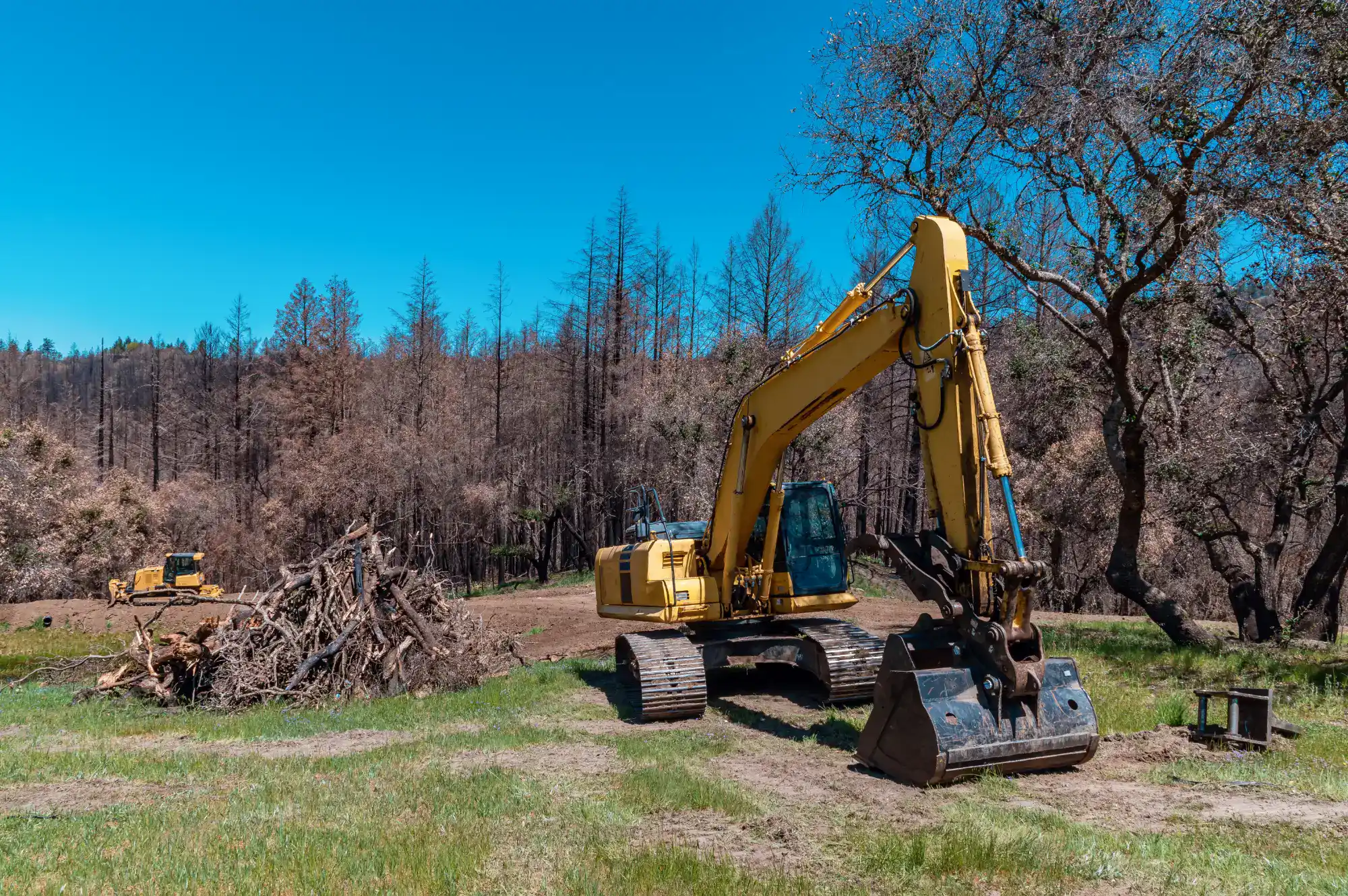
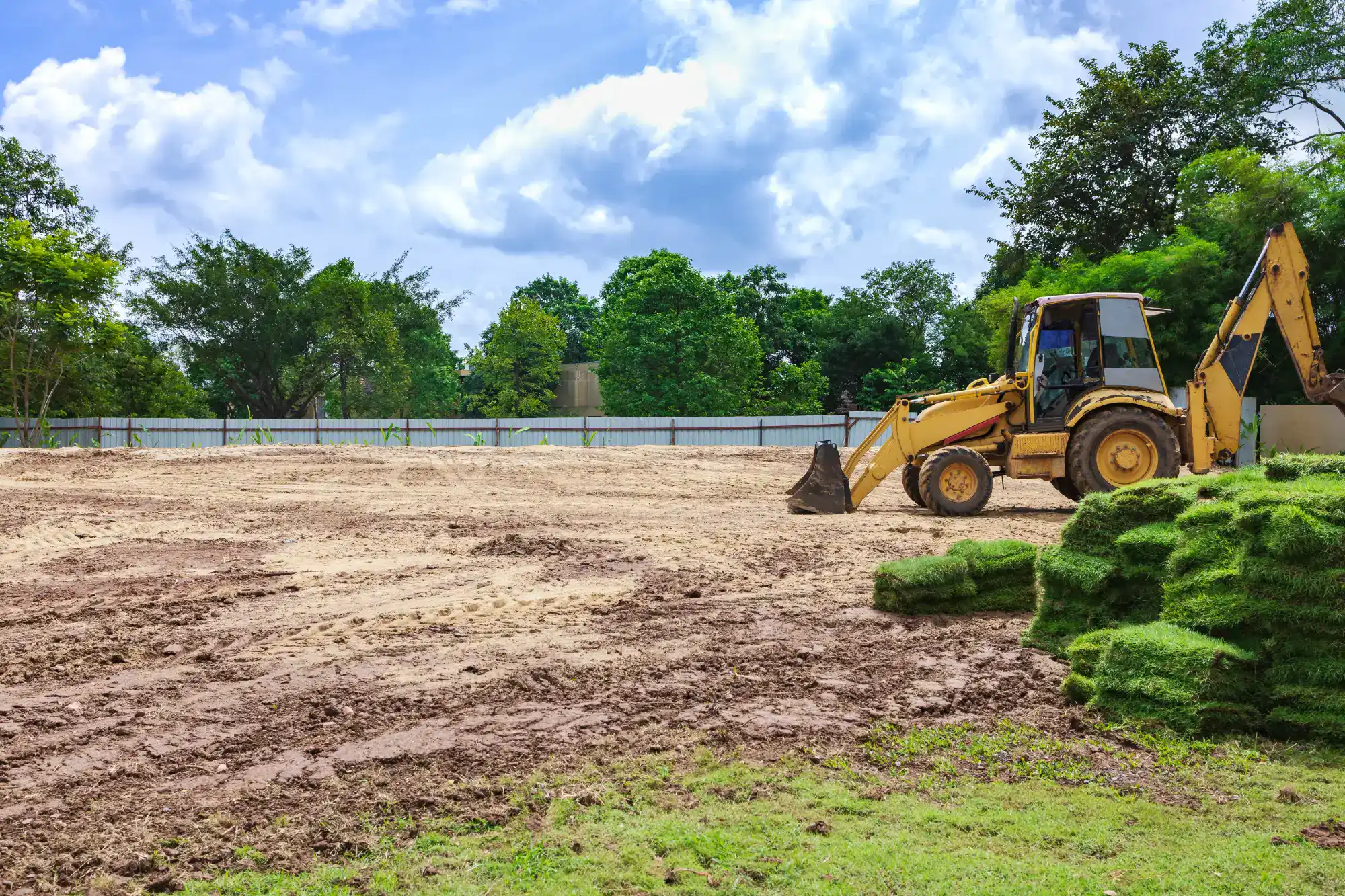
You’re not just getting trees removed. You’re getting land that’s actually ready for construction—level, clean, and prepared for the next phase of your project.
Most homeowners in Adirondack face the same challenge: beautiful wooded lots that need professional clearing before any building can start. The difference between a rushed clearing job and proper site preparation shows up in your foundation work, drainage, and how smoothly your entire construction timeline runs.
When we’re done, your contractor can roll equipment right onto the site. No surprises, no delays, no wondering if the ground is stable enough for what you’re building.
We started as a logging operation in 1997 and moved into full-time excavation in 2020. Josh runs jobs personally, with his son joining as partner in 2022—the kind of family involvement that means your project gets attention, not just equipment time.
We’re the excavating company Adirondack homeowners call when they want the job done right the first time. No shortcuts, no surprises, no wondering if we’ll show up when we say we will.
The Adirondack region’s unique terrain—from the rolling hills near the Catskills to rocky soil conditions—requires local knowledge that comes from decades of working this land.
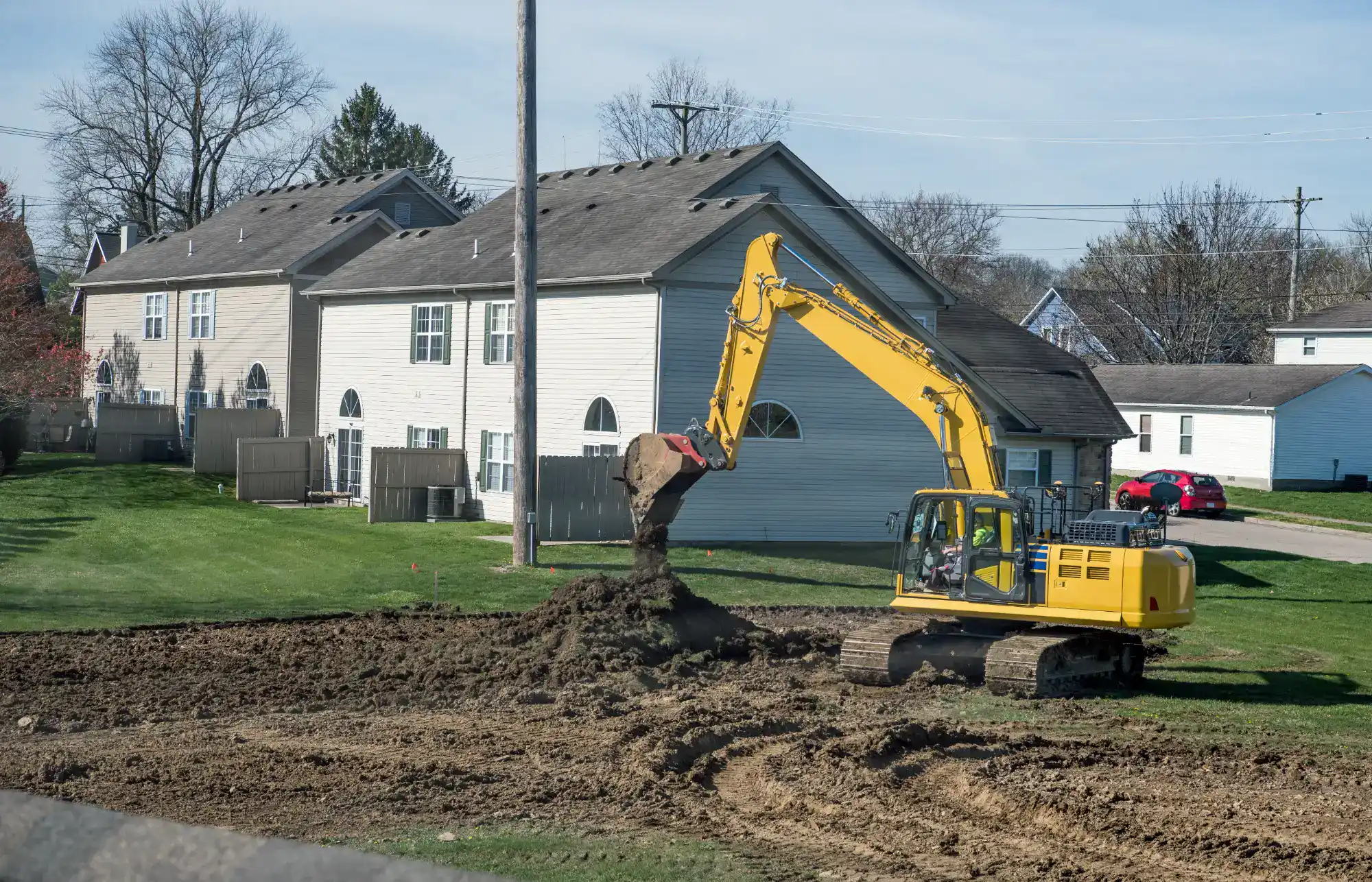
First, we walk your property with you. We identify what needs to go, what should stay, and any challenges that might affect timeline or cost. You know exactly what to expect before we start.
Next, we clear trees and brush using the right equipment for your terrain. In the Adirondacks, that means understanding rocky soil, steep grades, and how to work around the natural features you want to keep.
Finally, we grade and prepare the site for construction. Your land ends up level, stable, and ready for whatever comes next—whether that’s foundation work, septic installation, or driveway construction.
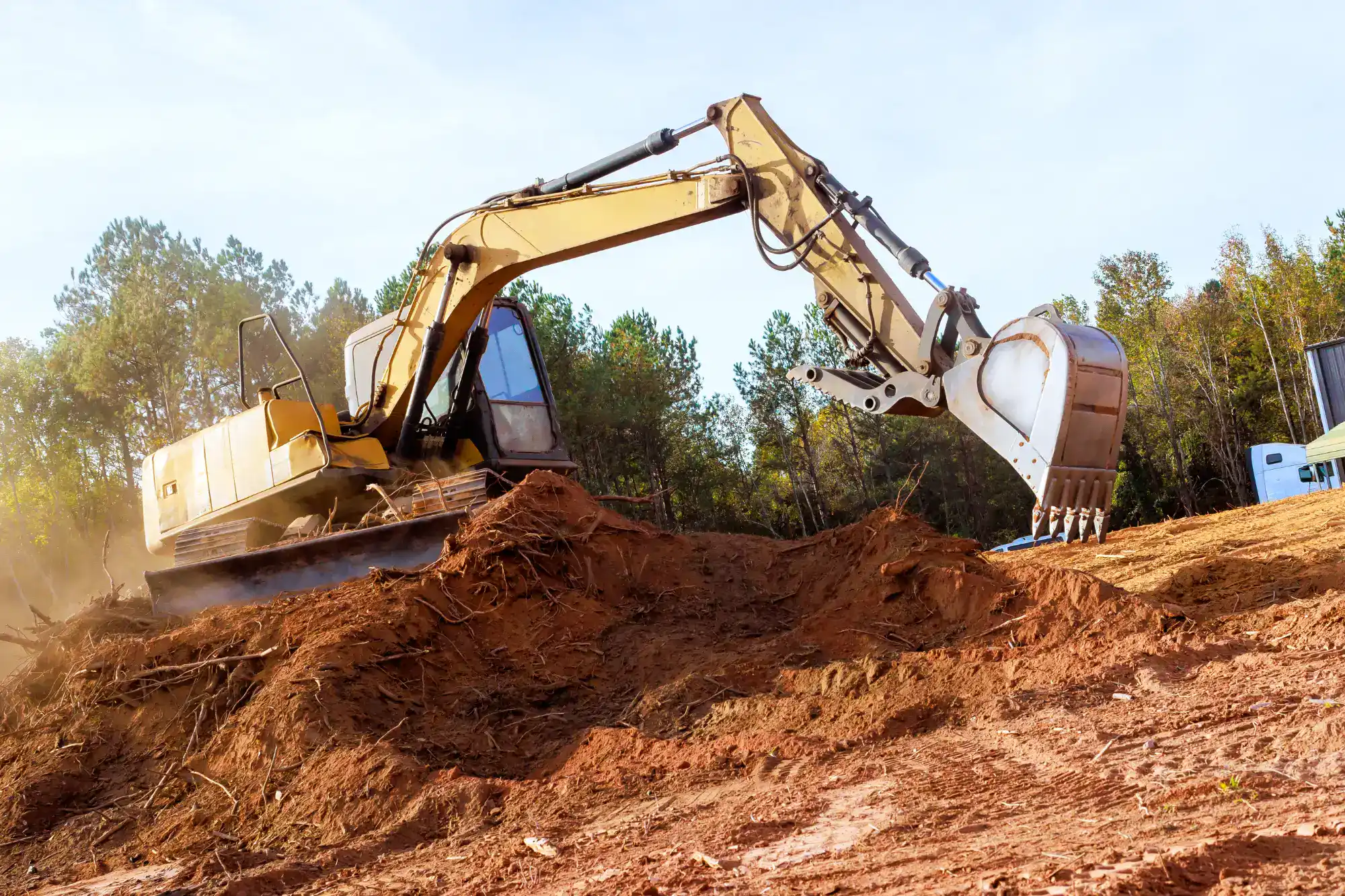
Ready to get started?
Land clearing and grading in Adirondack isn’t just about removing trees. The rolling hills, rocky terrain, and proximity to the Catskills and Berkshires create specific challenges that require local knowledge and proper equipment.
We handle comprehensive lot clearing services including tree and brush removal, stump grinding, grading, and site preparation. But more importantly, we understand Adirondack soil conditions, drainage patterns, and how to work with—not against—the natural landscape.
Your project gets the benefit of our logging background and excavation expertise. We know how to clear land efficiently while preserving the features that make your property valuable in the first place.
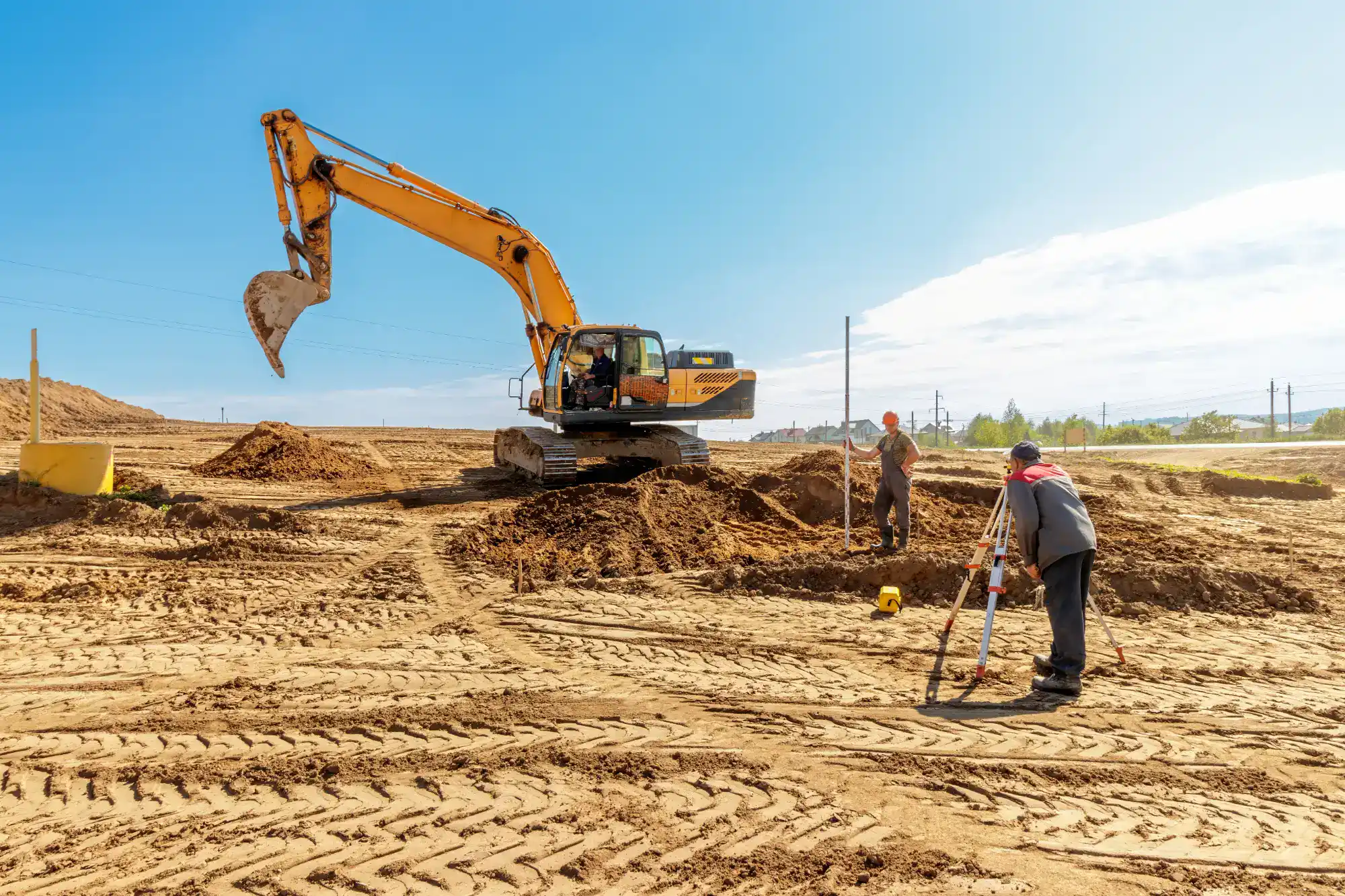
Land clearing costs in the Adirondack region typically range from $3,000 to $5,600 per acre, depending on tree density, terrain, and site accessibility. Lightly wooded areas with smaller trees and brush cost less than heavily forested lots with mature timber.
The final price depends on factors specific to your property: how steep the land is, whether we can get equipment to all areas easily, and what you want done with the cleared material. Rocky terrain or areas close to wetlands require more careful work, which affects both timeline and cost.
We provide free estimates that break down exactly what your project needs, so you understand the investment before any work begins.
Most residential land clearing projects in Adirondack take 2-5 days, depending on acreage and tree density. A typical half-acre building site with moderate tree cover usually takes 2-3 days from start to finish.
Larger properties or heavily wooded areas take longer, but we work efficiently to keep your construction timeline on track. Weather can affect the schedule—we avoid working in muddy conditions that could damage your property or create drainage problems later.
We coordinate with your builder’s schedule so the site is ready exactly when they need it. No rushing to finish, no delays that push back your foundation work.
We help navigate the permit process, but property owners are responsible for obtaining required permits. In the Adirondacks, you may need permits for clearing more than a certain amount of vegetation or working near wetlands.
The Adirondack Park Agency has specific regulations about land use and clearing. We know these requirements and can advise you on what’s needed for your project. We also mark protected trees that can’t be removed and work around environmental restrictions.
Getting permits right the first time prevents delays and potential fines. We make sure your clearing plan complies with local regulations before any equipment touches your property.
We handle all debris removal as part of our land clearing services. Trees can be chipped for mulch, cut for firewood if you want it, or hauled away completely—your choice based on what works best for your property and budget.
Our logging background means we often find value in timber that other contractors would just haul to a dump. Good sawlogs can offset some clearing costs, and we’re honest about what’s worth keeping versus what needs to go.
Brush and smaller material gets chipped and can stay on-site for natural mulch or erosion control, or removed entirely depending on your landscaping plans. The site ends up clean and ready for construction.
Yes, winter clearing is often ideal in the Adirondacks. Frozen ground supports heavy equipment better than muddy spring conditions, and you can see the terrain clearly without leaves blocking the view.
Snow cover actually protects the ground surface during clearing operations. We can work efficiently without creating ruts or soil compaction that might cause drainage problems later. Winter scheduling also means your land is ready for construction as soon as ground thaws in spring.
Weather does affect our schedule—we don’t work during ice storms or extreme cold that could be unsafe for operators. But normal winter conditions are fine for most clearing operations.
Absolutely. Land clearing is just the first step—proper grading and site preparation are essential for successful construction. We level the cleared area, establish proper drainage, and create stable surfaces for foundation work.
In the Adirondacks, proper grading is critical because of rocky soil and natural water flow patterns. We understand how to work with the terrain to prevent erosion and ensure water moves away from your building site.
Site preparation includes removing rocks and stumps below grade, compacting soil where needed, and creating access routes for construction equipment. Your contractor gets a site that’s truly ready for the next phase of work.
Other Services we provide in Adirondack